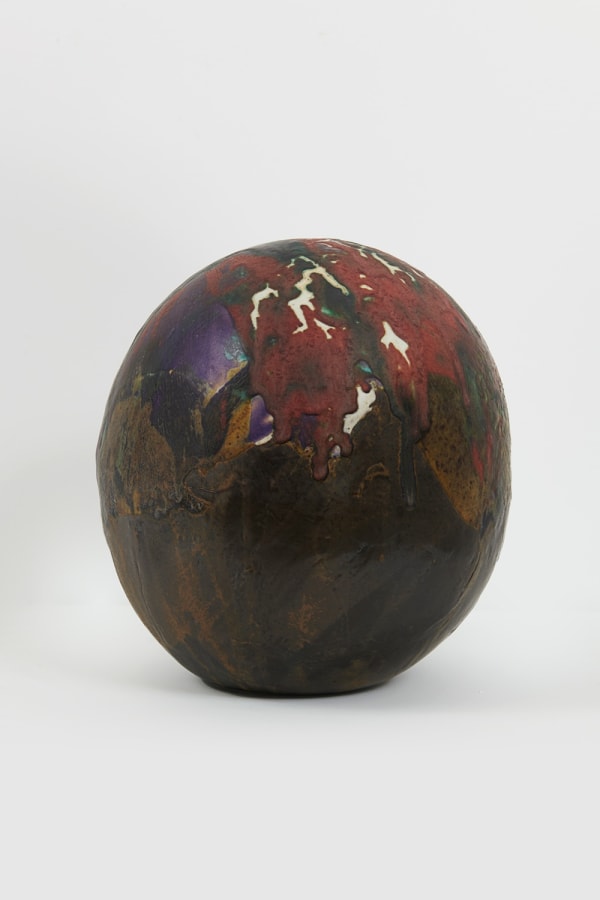-
-
Interplay features a selection of rare works by the American master ceramicist Toshiko Takaezu (b. 1922, Pepeekeo, Hawaii - d. 2011, Honolulu, Hawaii). Takaezu’s ceramics not only demonstrate her masterful capabilities in crafting form through clay, but also manage to surpass classification, hovering between pottery, sculpture and painting; revealing exceptional control of color in a medium that often is at the whim of the kiln.
This focused exhibition is presented on the occasion of the first nationally touring retrospective of Takaezu’s work in over twenty years, opening on March 20, 2024 at The Isamu Noguchi Foundation and Garden Museum. -
-
-
-
“One of the best things about clay is that I can be completely free and honest with it. And clay responds to me. The clay is alive and responsive to every touch and feeling. When I make it into a form, it is alive, and even when it’s dry, it is still breathing! I can feel the response in my hands, and I don’t have to force the clay. The whole process is an interplay between the clay and myself, and often the clay has much to say.” - Toshiko Takaezu
-
-
-
-
Toshiko Takaezu evolved a discrete series of globular forms that she called Moons. From the early 70s on, these were formed from two halves in molds. Their surfaces may be smooth, shiny, or matte, often featuring a multitude of colored glazes. Her moons recall heavenly bodies and planetary forms. In homage to its stunning exterior, Takaezu titled this work Best Moon, 1989. It features washes of ochre, terracotta red, greens and browns and bold strokes of inky black glaze swooping over its curved surface.
-
 Mercer, 1983 (detail)
Mercer, 1983 (detail) -
-
-
Her palette often references colors seen in nature – particularly from her native Hawaii – like ochre, black, white, brown, soft grays and varying shades of blue. Applications of yellow, pink, orange and greens were often atmospheric and suggestive of foggy landscapes and ink paintings. Her series Ocean’s Edge recalls the effects of waves crashing into one another through her superimposition of glazes in deep blues and turquoise, rich purple and inky blacks.
-
-
 Toshiko throwing a closed form at the Penland School of Crafts, North Carolina. Photo credit: Evon Streetman. Courtesy of The Family of Toshiko Takaezu.
Toshiko throwing a closed form at the Penland School of Crafts, North Carolina. Photo credit: Evon Streetman. Courtesy of The Family of Toshiko Takaezu. -
SOURCES:
Peter Held, “In the language of silence, The Art of Toshiko Takaezu” 2010, published by The Toshiko Takaezu Foundation, New York.
John Perreault, “Toshiko Takaezu: Truth In Clay,” from Toshiko Takaezu: Heaven and Earth published on the occasion of the exhibition of her multipart installation Star Series, at the Racine Art Museum, Racine, Wisconsin, from September 2005 - January 8, 2006.
-
Toshiko Takaezu: Interplay
Past viewing_room

























